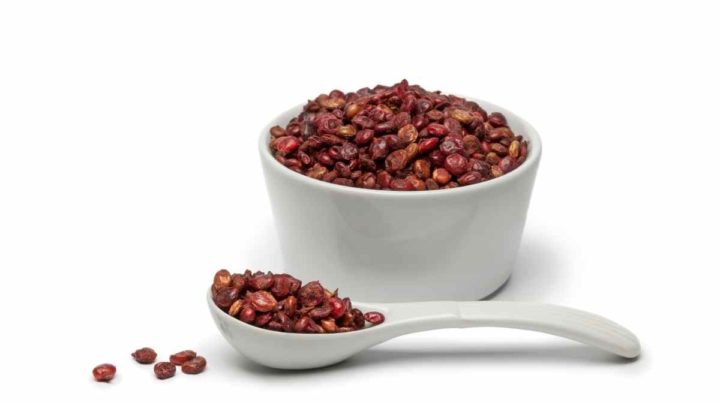Sumac is a small, thorny shrub that grows in the Mediterranean region. It has been used as food and medicine since ancient times. The fruit of this plant contains an essential oil called “sumac,” which gives it its characteristic flavor. This kind of spice can be found at most grocery stores or specialty markets. You may also find dried ground sumac available online.
We have made this article to give you further details about sumac, specifically its usage and its best substitutes. We have listed down how to use the sumac alternatives as well. Read more below to have an idea.
You may also like to read
What Does Sumac Taste Like
As mentioned, sumac is a spicy-tasting herb with a sour taste. This spice is very popular in Iran, which is commonly mixed in dishes like rice pilafs and salad dressing. In addition, it is often added as an essential ingredient to marinades and sauces. It is like salt and pepper to most western cuisine. The leaves are usually chewed on their own, but they can also be brewed into tea. They are greenish-yellow in color, while their fruits are red. When crushed, they release their juice into your mouth. They smell like lemons when fresh but turn bitter after drying out.
Mediterranean people believe that sumac has a lot of health benefits for us. For instance, it can help prevent cancerous tumors from growing inside our bodies. Moreover, it helps reduce inflammation and pain. Also, it prevents heart disease by lowering cholesterol levels. Furthermore, it reduces blood pressure and strengthens bones. All these properties make sumac one of the top spices we should add to our diet. However, there are some things you need to know before using it.
How To Use Sumac Powder?
You can add sumac to any savory dish where lemon would normally go. For example:
- Add some sumac to chicken dishes such as soups, stews, casseroles, etc.
- Use sumac instead of lemon in salad dressing.
- Mix sumac with olive oil and rub over fish fillets before grilling them.
- Make a sauce with sumac and vinegar. Add it to pasta dishes.
- Include sumac in bread dough recipes.
- Try adding sumac to meatloaf mix.
7 Best Sumac Substitute And How To Use It
Looking for the perfect sumac substitute? Here they are:
1. Smoked Paprika
Smoked paprika is a spice blend made of peppers that were smoked over wood fires and is a great sumac spice substitute. It is popular in Middle Eastern dishes countries because of its unique smoky aroma. If you want to try something similar, then smoked paprika will do just fine. Its main ingredient is black peppercorns, so if you do not mind having a little bit of heat, then this might work for you too. These types of peppers contain less capsaicin than other varieties, so they do not burn as much. As a result, smoke paprika does not cause as many stomach problems as regular paprika does.

When used as an excellent replacement for sumac, mix 1/2 teaspoon each of smoked paprika and garlic powder together. Then sprinkle it onto meats before cooking. Alternatively, you could grind up the whole thing and combine it with butter. Spread it all over before cooking them.
2. Ground Coriander
If you are not yet familiar with ground coriander, it is a spice that comes from seeds of plants called Coriandrum sativum. It tastes great when sprinkled on vegetables or even baked goods. You may find it at Asian grocery stores. There are two ways to prepare it. One way is to roast the seed until browned. Another method involves grinding the dried seeds. Both methods yield different results. Roasted coriander tends to get darker and sweeter, whereas ground coriander gets lighter and spicier.
This is also used as a replacement for sumac powder because of its resemblance to the flavor profile. It has a lemon-like flavor with a touch of earthy taste. It is not as vibrant as sumac, but it has a great tartness, which is perfect for meats.
3. Lemon Juice or Lemon Zest
Another perfect substitute for sumac is lemon juice or lemon zest. This works well when making sauces or marinating foods. The acidity of lemons makes them an excellent choice for seasoning food. They have a sour taste that complements most flavors. When combined with salt, pepper, herbs, and spices, they create a delicious combination. In addition, lemon juice also keeps your food fresh longer.
Use fresh lemon juice or lemon zest as a substitute for sumac when you are looking for a good seasoning for seafood and meat. Make sure to mix 1 tablespoon of sumac along with salt and ground black pepper. Sprinkle it evenly across the surface of the meat or fish.
4. Za’atar
Za’atar is another good alternative to sumac. It is a tasty mixture of sesame seeds, thyme leaves, oregano, and sometimes rosemary. It adds a wonderful savory flavor to a variety of dishes. You can make your own version of Za’atar by combining equal parts of the said ingredients and a combination with salt and ground black pepper. Mix everything together thoroughly and store it in airtight containers. Use it whenever you need some extra flavor.
Za’atar is best used as a substitute when you are making vegetables and chickpeas. Just replace the exact amount needed in the recipe for sumac. The only downside of this spice is the high sodium content. So, better use it in moderate amounts, giving way for those who have low sodium diet.
5. Lemon Pepper Seasoning
This kind of seasoning is the closest flavor profile of sumac. However, there is one big difference between these two: lemon pepper contains no citrus fruits. Instead, it uses crushed red chile flakes mixed with sea salt. To make it yourself, simply add 2 tablespoons of crushed red chiles into a bowl. Add 3 teaspoons of kosher salt and stir it around. Let it sit overnight. After that, strain out the solids and transfer the liquid into a jar. Store it away from sunlight and moisture.
This alternative is best used in dishes where you want something spicy without being too hot. For example, if you use it in chicken wings, then sprinkle it over the top before baking. If you are adding it to salads, just combine it with olive oil and vinegar.

6. Tamarind Paste
Another excellent substitute for sumac is tamarind paste. It is a tropical fruit made up of pods containing sticky pulp. To make tamarind paste, soak the pod overnight in water. Then drain out all the liquid and blend the remaining pulp with sugar. Store it in jars and refrigerate it. If you want to use it right away, warm it slightly before using it.
Tamarind paste when is very versatile. You can use it to season rice dishes, soups, curries, salads, and desserts. It contains a strong citrusy flavor; hence it only needs a small amount when used to substitute for sumac.
7. Vinegar
Vinegar has been known to be a great ingredient for many years now. Its acidic properties help preserve food while also enhancing its flavor. There are several varieties of vinegar available on the market today. But regardless of what type you choose, always remember to buy organic ones. Organic products do not contain harmful chemicals like pesticides and herbicides. Plus, they give the best-fermented liquids for several dishes.
Vinegar is also used as a sumac alternative because they have similar flavors. They both provide an acidic taste, which helps enhance the taste of foods. When replacing sumac, try to find apple cider vinegar or white wine vinegar. Both work well but the latter provides a stronger flavor.
How to Store Sumac
Sumac should be stored at room temperature in dark bottles. This will prevent them from going bad quickly. Once opened, keep them tightly sealed until you’re ready to use them again.
If you do not know how much sumac you will need, start off with half a cup per pound of meat. That way, you will not run out of it anytime soon. Also, if you plan to cook more than once, consider buying larger amounts so you will not end up wasting anything.

Can You Make Your Own Sumac Spice
Here is a simple sumac spice recipe that you can make in case you ran out of it at home.
Ingredients:
- Sumac berries
Directions:
1. Dry all the berries from the sumac plant. Allow them to dry in a cool dark place for a couple of weeks.
2. Grind your sumac berries using a blender or food processor. Grind until the red dust is completely separated from the yellow seed.
3. Collect the red dust by straining the seeds using coriander or strainer. The red dust contains the tartness of sumac, which is a good authentic flavor for dishes.
4. Place the red dust or sumac spice in an airtight container and store it in a cool dry place.
There are also some different types of Sumac like Fragrant Sumac, Smooth Sumac, and Staghorn Sumac.